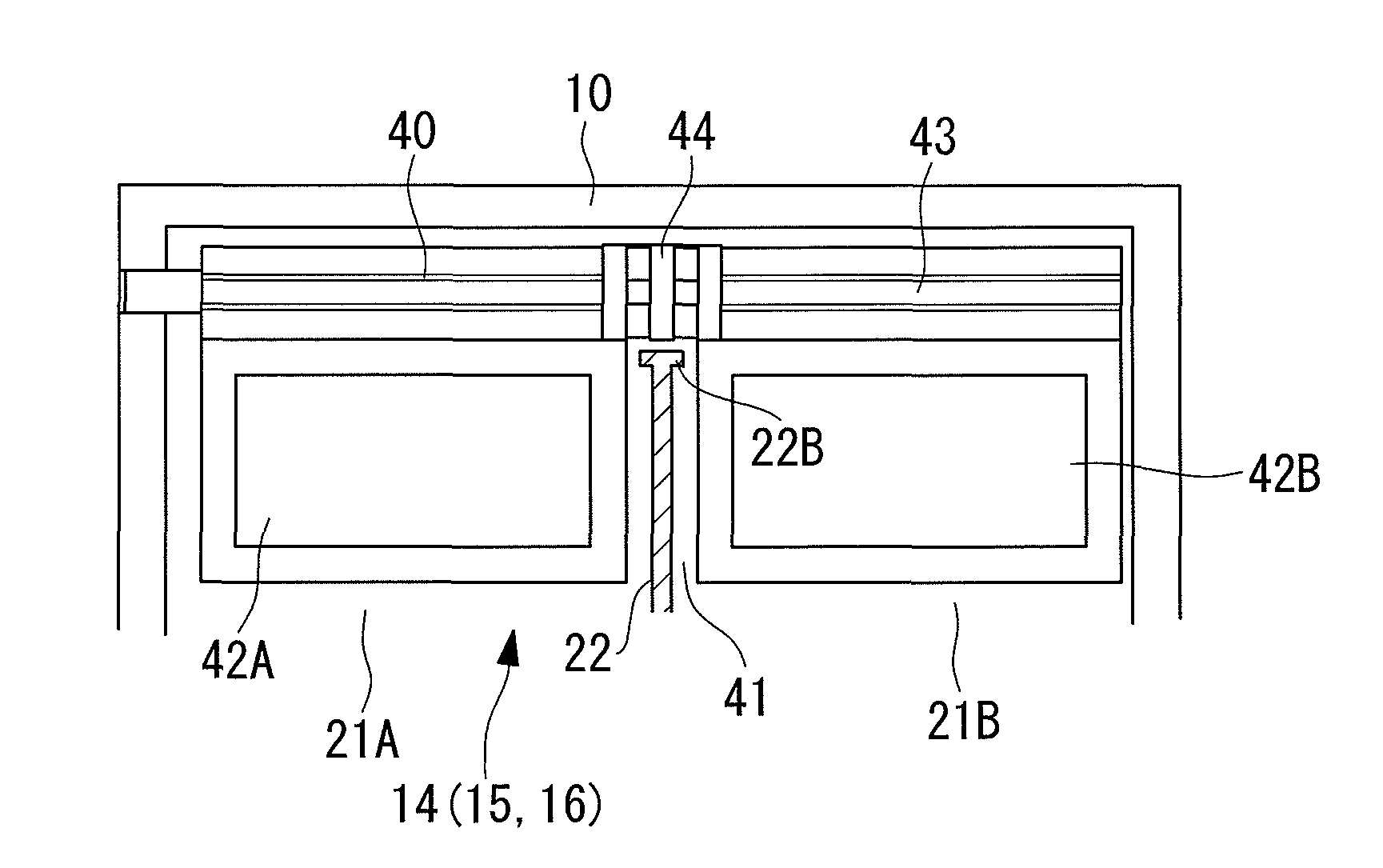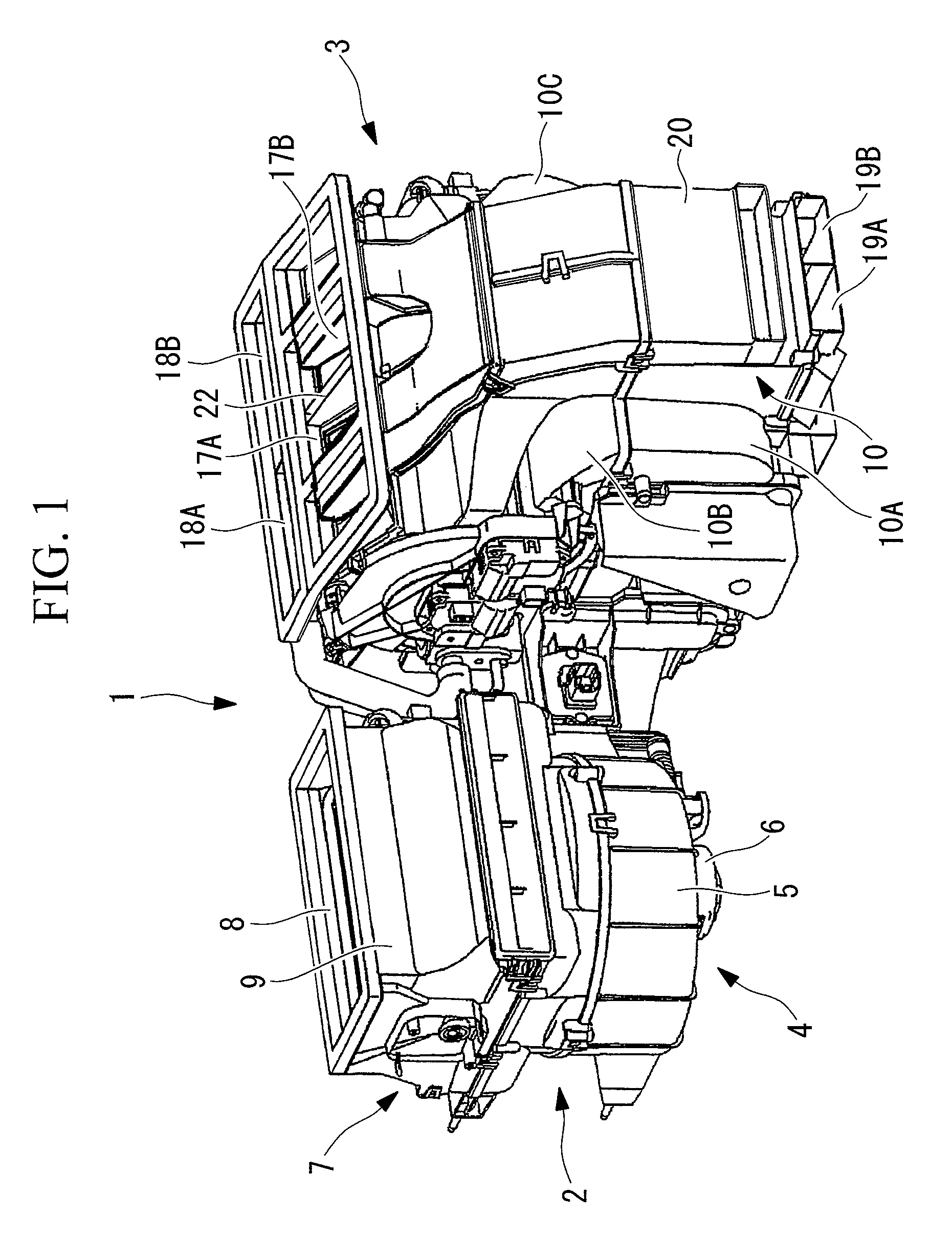Blowing-mode door for vehicle air-conditioning apparatus and vehicle air-conditioning apparatus using the same
a technology of vehicle air conditioner and blower, which is applied in the direction of vehicle components, vehicle heating/cooling devices, air-flow control members, etc., can solve the problems of reducing the independent temperature-adjusting performance, affecting the temperature-adjustment performance, and affecting the ability to increase the thickness of only the rotating shaft, so as to reduce the leakage of temperature-adjusted air, improve the torsional rigidity of the portion, and reduce the strength of the door
- Summary
- Abstract
- Description
- Claims
- Application Information
AI Technical Summary
Benefits of technology
Problems solved by technology
Method used
Image
Examples
first embodiment
[0069]A first embodiment of the present invention will be described hereinbelow with reference to FIGS. 1 to 7D.
[0070]FIG. 1 shows an external perspective view of a vehicle air-conditioning apparatus 1 according to the first embodiment of the present invention. The vehicle air-conditioning apparatus 1 is constituted of an air-blowing unit 2 that intakes external air from the exterior of the vehicle or internal air from the interior of the vehicle cabin and sends the air to the downstream side and an air-conditioning unit (HVAC unit) 3 connected to the downstream side of the air-blowing unit 2 and adjusts the temperature of the air sent from the air-blowing unit 2 to a set temperature and blows it into the vehicle cabin.
[0071]The air-blowing unit 2 is constituted of a centrifugal air blower 4 provided with an impeller (not shown) driven by a motor 6 in a casing 5 and an internal / external-air switching unit 7 connected to an air inlet of the casing 5. The internal / external-air switchi...
second embodiment
[0099]Next, a second embodiment of the present invention will be described with reference to FIGS. 7C and 7D.
[0100]This embodiment differs from the above-described first embodiment in the structure of rotating shafts 50 of the blowing-mode doors 14 to 16. Since the other features are the same as those of the first embodiment, descriptions thereof will be omitted.
[0101]The rotating shaft 50 of this embodiment is configured such that ribs 53 provided around the shaft are provided only in the direction parallel to the plate-like doors 42A and 42B (see FIG. 7C) or only in the direction perpendicular to the plate-like doors 42A and 42B (see FIG. 7D). Circular ribs 54 that connect the ribs 53 together are provided with a predetermined pitch at three locations corresponding to the gap 41 in the center of the rotating shaft 50, as in the first embodiment.
[0102]The structure in which the rotating shaft 50 is provided with the ribs 53 and the circular ribs 54 as in the above can also provide ...
PUM
 Login to View More
Login to View More Abstract
Description
Claims
Application Information
 Login to View More
Login to View More - R&D
- Intellectual Property
- Life Sciences
- Materials
- Tech Scout
- Unparalleled Data Quality
- Higher Quality Content
- 60% Fewer Hallucinations
Browse by: Latest US Patents, China's latest patents, Technical Efficacy Thesaurus, Application Domain, Technology Topic, Popular Technical Reports.
© 2025 PatSnap. All rights reserved.Legal|Privacy policy|Modern Slavery Act Transparency Statement|Sitemap|About US| Contact US: help@patsnap.com



